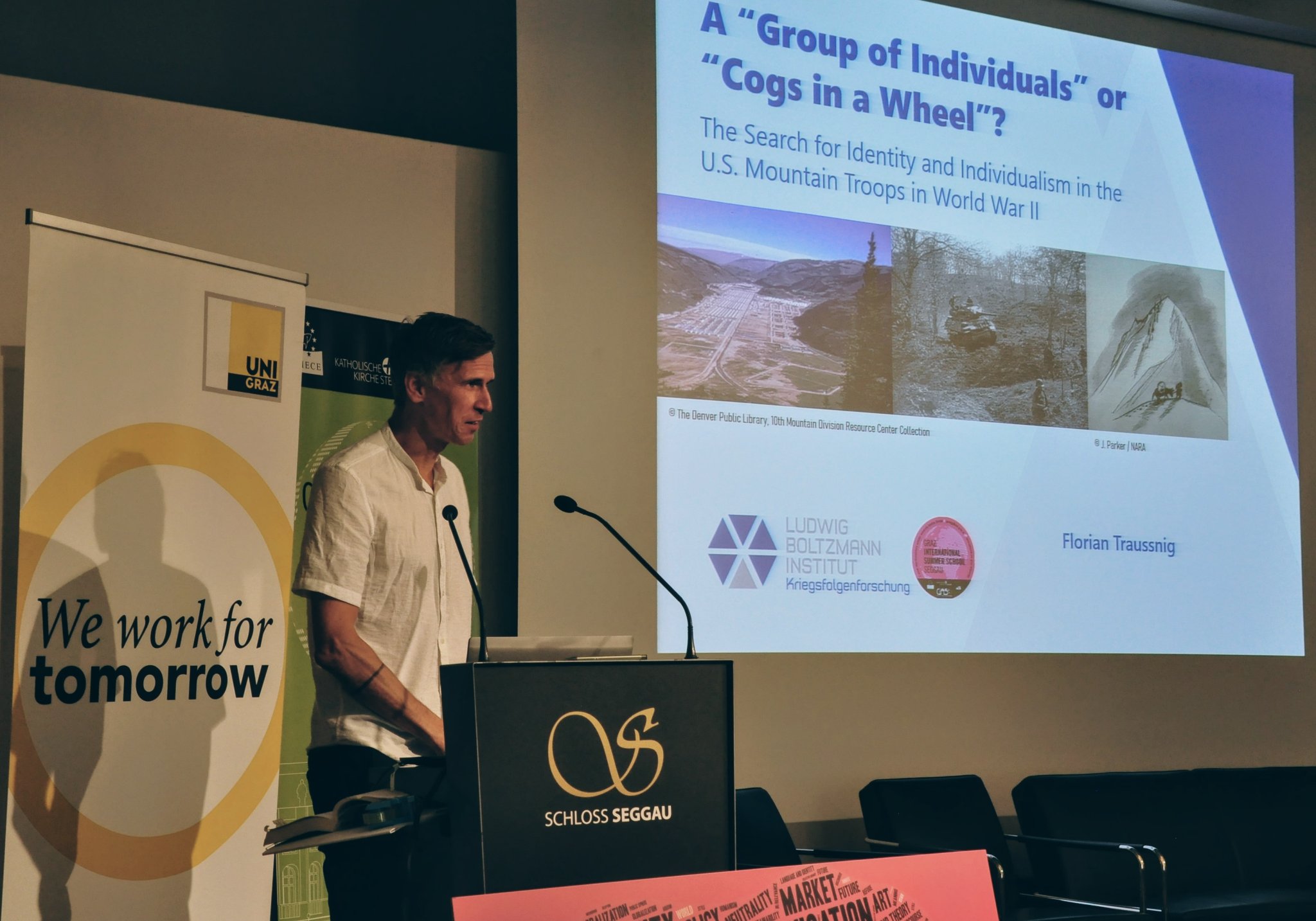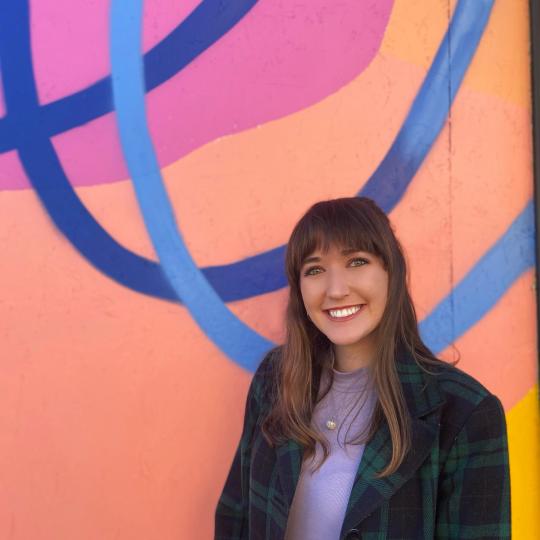Summer School Seggau: „Pop-Up“-Ausstellung, Vortrag & Workshop zu (austro-amerikanischen) Gebirgssoldaten
12 Jul 2023, 09:00 – 12 Jul 2023, 12:30
Schloss Seggau, Seggauberg 1, 8430 Leibnitz
„Conflict, Challenge, and Change: State – Society – Religion“ – so lautet der Titel der heurigen Graz International Summer School Seggau. Passend zu diesem aktuellen Thema werden Florian Traussnig und Robert Lackner sowie zwei Gäste aus den USA am Mittwoch, den 12. Juli einen bildreichen und kuratorischen Einblick in das laufende Forschungsprojekt „Österreicher in der 10th Mountain Division“ geben.
Unter dem Titel „Shifting Perspectives on Mountains, Wars, and Recreational Businesses: A Pictorial History & Case Studies on Austrians in the 10th U.S. Mountain Division of World War II“ präsentieren die beiden BIK-Historiker englischsprachige Fallstudien sowie eine bilinguale Rollup-Ausstellung, die großteils auf Bildern des jüdischen „refugee soldier“ Curt Krieser beruht (Eindrücke von der erstmaligen Präsentation der Pop-Up Exhibition in Wien – Tipp: die Wanderausstellung kann auch von externen Gästen am 11. und 12. Juli ganztags auf Schloss Seggau besichtigt werden!)
Der Beitrag von Traussnig und Lackner ist eng mit dem kuratorischen Workshop von Chris Juergens und Sydney Mauck verbunden, die im Rahmen der von der US-Botschaft in Wien geförderten Vermittlungsinitiative zum laufenden Projekt praxisnahe und aktivitätsbezogene Einblicke in Ihre Arbeit beim Museum History Colorado in Denver vermitteln: „Conflict and Storytelling: a Museum’s Approach to Preserving and Sharing History with a focus on the 10th Mountain Division in World War II“.
Abstract zum Beitrag von Florian Traussnig und Robert Lackner:
Shifting Perspectives on Mountains, Wars, and Recreational Businesses: A Pictorial History & Case Studies on Austrians in the 10th U.S. Mountain Division of World War II
Deeply intertwined with the curatorial workshop „Conflict and Storytelling“ by Chris Juergens and Sydney Mauck, we have chosen the visual “interpretative lens” of a young immigrant soldier from Vienna to tell the story of about a hundred “unlikely soldiers” of World War II. Mostly refugees from Nazism, this cohort of Austrian mountain soldiers, with ski stars and mountaineers in its ranks, ended up in the so called 10th Mountain Division – the only U.S. military unit that specialized in combat in alpine and climatically extreme conditions during the war.
The photographs of Curt Krieser, a Jewish refugee and avid mountaineer, are the main narrative (and aesthetic) backbone of our talk and a travelling „pop-up“ photo exhibit. His photos are documenting the experiences of the Austro-American mountain troopers from training in a high mountain valley in Colorado to combat duty against the German Wehrmacht in Italy. An experience full of shifting perspectives: Krieser’s initial soldierly enthusiasm and eco-romanticism in his pictorial representations of Colorado’s and Washington’s (imagined) “paradises” yield to a more profane imagery as the war progresses. Faced with death and destruction during the bloody campaign and the fight against totalitarian rule in the Apennines and the Po Valley, Krieser, the mountaineer and refugee soldier, experiences and visualizes also the “ecology of war”. Subtle and “silent”, Krieser’s photography is thus a kaleidoscope of the war’s human, social, and military disruptions as well as its ecological effects. We will also present selected case studies on Krieser’s Austrian fellows in the U.S. mountain troops, such as Friedl Pfeifer – a dazzling “ski hero” and energetic entrepreneur of the booming U.S. ski industry after the war. However, we will also refer the long-term (ecological) costs incurred by phenomena like “Aspenization” and the buzzing businesses of the American colossus. Could the imaginative power and the popular mythology of these ski troopers be useful for the current fight against global warming, and if so, how?
Abstract zum Beitrag von Chris Juergens und Sydney Mauck:
Conflict and Storytelling: a Museum’s Approach to Preserving and Sharing History with a focus on the 10th Mountain Division in World War II
Museums can play an important role as sites of learning about conflict with carefully selected objects and stories that unveil the various dimensions of war and its far-reaching consequences. Using the American 10th Mountain Division in World War II as a lens, this workshop will introduce you to some of the considerations and processes museums undergo in preserving and sharing the past – and will have you consider how you might approach teaching others about a conflict that has a connection to your own communities.
Through a series of teaching episodes and interactive activities, you will consider the various stories objects have the power to tell, the systematic approaches to preserving the past, and the myriad ways in which these stories can be shared with others. With real-life examples from a mid-sized state museum in the United States, you will see the ways in which the history of conflict intersects with diverse themes, methodologies, and interpretive lenses. We will consider wars’ impact on individuals, families, and communities, as well as on societies, economies, and the natural realm, and the complexities of multinational perspectives and their moral implications.



